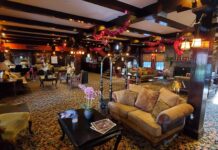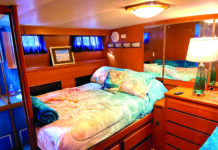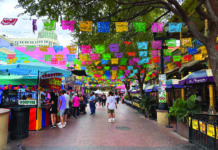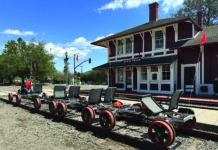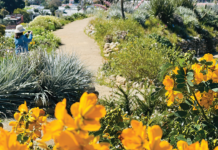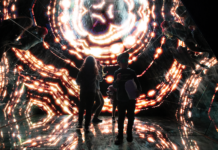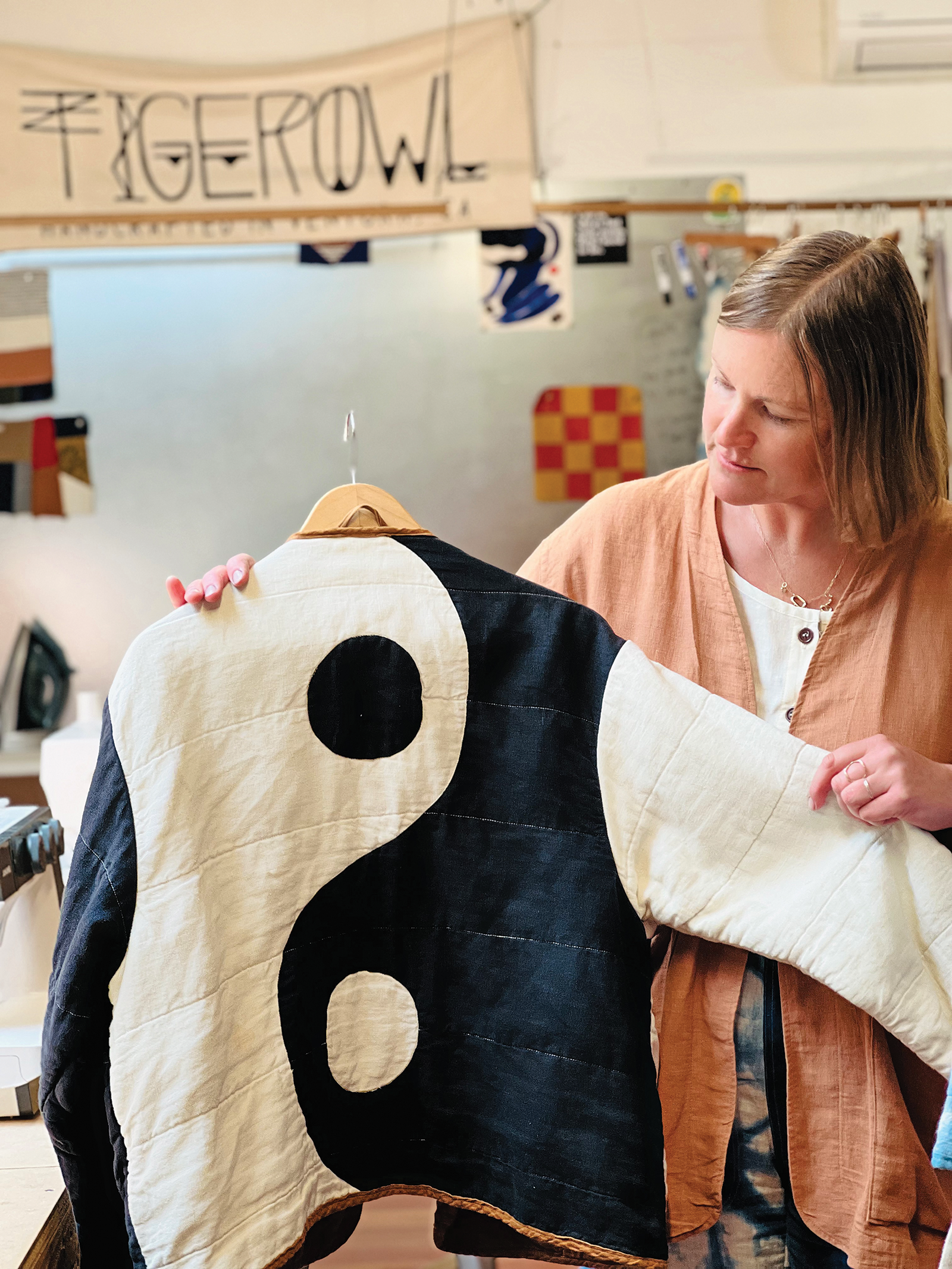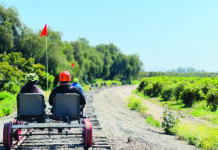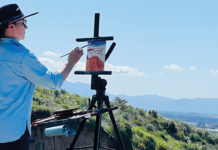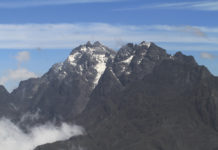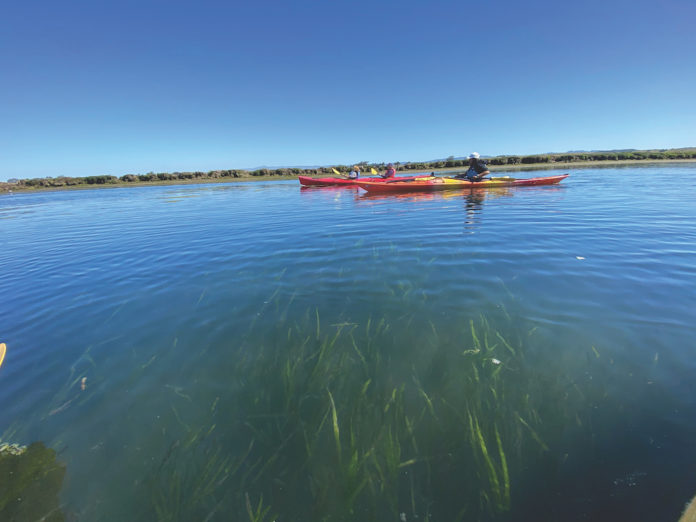
SPLENDOR IN THE GRASS Seagrass waves gracefully beneath kayakers paddling through the calm, glassy waters of Elkhorn Slough. Photo by Chuck Graham
Story and photos by Chuck Graham
The deep submarine canyon was boiling with marine life. Massive bait balls of fish were swirling about, herded by several hungry humpback whales. Pacific white-sided dolphins were sidling up nearby, piggybacking on the humpback’s aquatic pursuit. A few California sea lions weaved their way into the mix, opportunistic and porpoising between all the cetaceans in Monterey Bay.
Anticipation mounted long before we reached Monterey Bay for a whale watching excursion out to one of the most studied places on the planet in terms of oceanography and marine biology. Monterey Bay teems with marine mammals and throngs of seabirds. The massive trench is also known as “the Grand Canyon of the West Coast,” with good reason: It is a mile deep and 300 miles long. Traveling with my girlfriend, Holly Lohuis, a naturalist and marine biologist, it’s always fun being on the boats with her and learning from someone who has devoted a big chunk of her life to marine conservation.
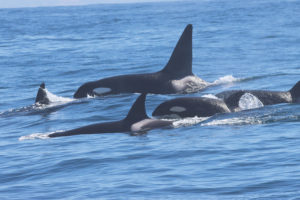
After we booked two whale watching trips, we were both keeping tabs on the daily sightings leading up to our trips. It seemed like every day was the next best day for sightings. What would ours be like? Not only do folks want to see the amazing animals that flock to Monterey as if it were a pelagic Mecca, but the weather is another factor. Fog and northwesterly winds can put a damper on a trip, making it challenging to spot marine mammals.
The reports we tracked before our trips were delivering heaps of orca activity towards the tail end of the northbound gray whale migration. One report in particular spoke of orca predation on a gray whale calf with as many as 15 orcas feeding on the carcass.
Instant Gratification
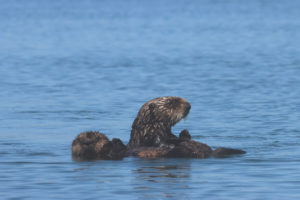
As our first trip began, we weren’t out of the harbor yet before we saw a southern sea otter feeding on a crab, lying on its back and using its chest like a kitchen table. The marine mammal with the densest fur in the animal kingdom finished off the crab within seconds. Just beyond the jetties we were greeted by a small pod of Risso’s dolphins appearing just off our starboard bow. They are capable of diving 1,000 feet down and hold their breath for 30 minutes. Predominantly deep-water marine mammals, it was surprising seeing them so close to the harbor, but wildlife is on its schedule. They’re unpredictable.
Holly and I posted up on the bow of the boat. We didn’t want to miss anything. It was clear with winds light and variable. The weather was favorable for spotting big splashes on the distant horizon for some pelagic megafauna.
That first trip we were not disappointed. Orcas are always at the top of our list whether in Monterey Bay or the Santa Barbara Channel, but Monterey Bay possesses a higher sighting rate when it comes to experiencing these apex predators. They are at the very top of the food chain, and their intelligence is on a whole other level, and their closely knit pods exhibit complex family dynamics. Seeing them in the past has always been a thrill, and we were in luck on our first trip. There were six orcas in the pod and they were moving fast. Because they are a keystone species, everything steers clear of them except seabirds that know that, eventually, the orcas will locate prey, and the seabirds are there to clean things up. Nothing goes to waste out here.
We stayed with the orcas for a good portion of our three-hour trip. It was hard to leave them knowing they would eventually pursue something. However, all the whale watching companies work together out there, so every company shares information and allows any boats in the vicinity to enjoy the wildlife.
Busy on the Bay
Our pelagic safari was just getting started, however. Further out into Monterey Bay, it was only a matter of time before cetaceans appeared again.
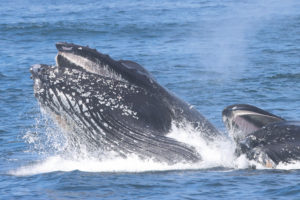
It was a tail fluke and several spouts that drew the captain’s attention. Clearly visible from the bow of the boat, humpback whales are the most fun to watch of the baleen whales. These ones were busy, too. In hot pursuit of massive bait balls of sardines, they were pushing their prey hard. Everyone on the boat was on their feet anticipating what might happen next. There would be quiet, and then suddenly the baitfish would begin jumping out of the water, followed by the lunge-feeding humpbacks. Their colossal mouths were fully agape, consuming as much food as possible, baitfish filtering through bristles of baleen.
Humpbacks are well equipped for action. Adults weigh in at 40 tons, or about the size of five African elephants. They’re not the biggest whales (that title belongs to the blue whale) but humpbacks hold the distinction for the largest pectoral flippers, reaching 15 feet in length. This helps them swim fast and make tight arcs underwater as they chase down their prey.
There were lots of seabirds flying overhead and sitting in the water just outside where the humpbacks were feeding. The most impressive was a lone black-footed albatross soaring and swooping above the whales. On the fringe were sooty shearwaters, northern fulmars and common murres.
We could’ve easily stayed out on the boat all day. With that much wildlife around, three hours went by quick. But we were appreciative of the amazing web of life constantly teeming throughout Monterey Bay.
Savoring the Slough
The bait ball of sardines moving with the ebb and flow of an incoming morning tide had attracted a decent chunk of Elkhorn Slough inhabitants toward the frenzied food source. We sat motionless in our kayaks and watched from inside the second largest tract of tidal salt marsh in California outside the San Francisco Bay.
This 7-mile-long teeming wetland of mudflats, serpentine channels, coastal prairies and oak woodlands provides much-needed habitat for hundreds of species of plants and animals, including more than 340 species of birds. It has been designated as a protected site under the Ramsar Convention, a UNESCO treaty concerned with the conservation of wetlands, since 2018.
Launching off the beach inside Moss Landing was arguably the easiest launch I’ve ever experienced, and Elkhorn Slough has always been one of the best places to photograph wildlife from a kayak.
The calm, glassy waters of the main channel rippled with baitfish sending ravenous squadrons of double-crested cormorants running on the surface of the water. Below the surface, we could also see them, snake-like, swimming and chasing the fish. From above, we followed the grating calls from aerodynamic Caspian terns as they strategically soared and hovered above before diving into the shallow waters, mostly successful while gobbling baitfish on the fly. They are North America’s largest tern species.
As the bait ball shifted with the tide, Holly and I let the incoming tide take us where it wanted, our kayaks floating above the fray as we followed the food source. Harbor seals maneuvered in, sidling along our kayaks as swarms of western sandpipers, the biggest concentrations of these shorebirds I’ve ever seen, buzzed by us, moving from mudflat to mudflat.
But they weren’t the only wildlife making an appearance. Columns of great egrets and great blue herons waded in the shallows, also joining the feeding frenzy of birdlife and blubbery harbor seals. The only animal seemingly disinterested was a lazy raft of southern sea otters, some with their padded paws covering their eyes during a mid-morning snooze.
Elkhorn Slough possesses a dizzying number of species, with 700 different types of flora and fauna and the highest concentration of southern sea otters in California. The serpentine-like channels offer great habitat for otters, seals and sea lions, especially when pupping.
Classroom on the Water
Mixed in with this flora and fauna are kayakers and standup paddlers, who use Elkhorn Slough for recreation. It is a terrific place to paddle, observe and photograph so many species in their natural habitat.
The 45,000 acres of wetlands also attract researchers studying everything from sea level rise to wildlife and plants to water quality.
Some do both. We saw a kayaker with a mounted iPad, an education specialist for the National Marine Sanctuary. He said he was about 30 seconds away from delivering a live Zoom from the field for sixth graders, a great way for kids to experience and learn from California’s second largest remaining wetland.
Elkhorn Slough represents some of the last 10 percent of remaining wetlands in the Golden State — a number I’ve heard many times over, but am alarmed by every time I hear it again. It forces me to reflect on the Carpinteria Marsh Reserve and Nature Park. It was once slated to become another marina lined with condominiums. And I’m thankful for the city of Carpinteria, the University of California Reserve System and nonprofits coming together to right the ship and preserve what is a mere postage stamp of what once was.
The inside of Elkhorn Slough is seemingly an aquatic utopia of birdlife and marine mammals easily coexisting, the ebb and flow of the tide dictating their time spent on mudflats and the soft hues of soggy pickleweed.
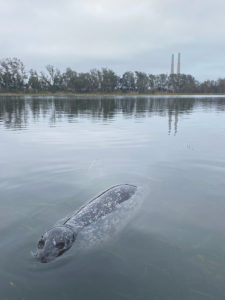
There were common loons swimming alongside sea otters. There were large flocks of western sandpipers, Caspian terns and double-crested cormorants sharing secluded mudflats while basking in the morning sun. Snowy egrets stood watch from the pickleweed overlooking nursing harbor seals as we floated by in our kayaks, the yelps of needy pups the only sounds we heard as northwest winds increased by early afternoon.
Elkhorn Slough and its many inhabitants are surrounded by agriculture, a power plant, a dairy farm, a bustling harbor and a busy Highway 1, proving that, when allowed, wildlife can still thrive under the right circumstances.




